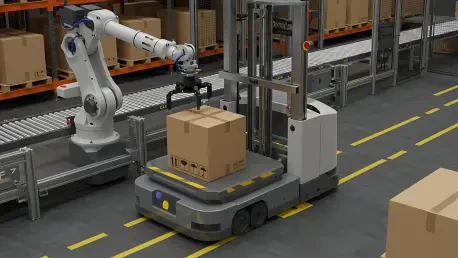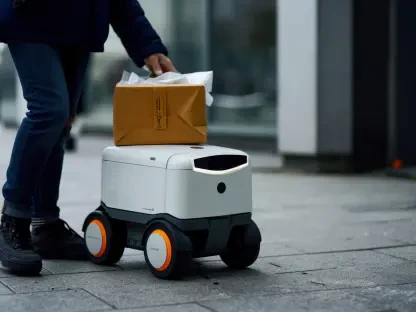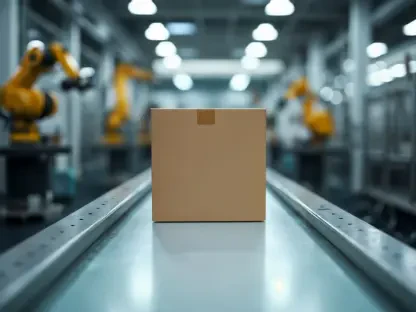The increasingly competitive landscape of e-commerce has propelled the need for innovative storage solutions that can meet growing demand while maintaining efficiency. An important breakthrough is the utilization of robotic storage solutions, which harness advanced technologies to streamline operations. These systems integrate robotic ingenuity with cutting-edge technology, redefining storage efficiency for logistics and e-commerce entities globally. In today’s fast-paced market environment, implementing these systems is crucial for staying ahead.
Contextual Analysis and Technological Innovations
Robotic storage solutions have transformed modern logistics by offering seamless automation and optimized space utilization. At their core, these systems employ robotic mechanisms to manage inventory with precision, significantly reducing human error and operational delays. Thanks to technological advancements, such as sophisticated sensors and enhanced navigation algorithms, these solutions continually evolve to meet the changing demands of businesses.
Importantly, robotic storage solutions hold tremendous importance in the logistics and e-commerce sectors. As consumers increasingly indulge in online shopping, efficient storage and retrieval systems are essential in fulfilling orders promptly. In essence, these robotic systems are not merely functional utilities; they are strategic assets that contribute to competitive advantage in the logistics market.
Analyzing Key Technological Features
Advanced Robotics Integration
Robotic storage systems feature highly advanced integration of robotics, featuring automation processes that simplify storage management. These systems often include robotic arms capable of handling a variety of goods irrespective of size or weight, enhancing both speed and safety. This integration enables businesses to maintain consistent operations, minimizing interruptions that can affect supply chain continuity.
Blockchain-Based Management Systems
Another notable feature is the implementation of blockchain technology, which adds an additional layer of security and efficiency. By employing a blockchain-based management system, these storage solutions ensure authentication and tracking, safeguarding against errors and discrepancies. This technology not only bolsters the integrity of data but also fosters transparency across the supply chain.
Current Innovations and Emerging Trends
Recent innovations are reshaping how robotic storage solutions operate, with artificial intelligence emerging as a critical component. AI algorithms enhance decision-making processes, allowing systems to self-optimize and learn from operational data. Sustainability considerations are also coming to the forefront, with companies exploring eco-friendly practices within automated storage to minimize environmental impact.
The cooperation between robotic systems and digital infrastructure is becoming more pronounced, signaling a shift toward hyper-connected storage environments. This integration facilitates smoother data interchange between disparate systems, streamlining operations and enhancing response times in real-time logistical scenarios.
Real-World Applications and Case Studies
Various industries are increasingly reliant on robotic storage systems, with notable applications found in e-commerce, manufacturing, and global logistics. For instance, Hellmann Worldwide Logistics has leveraged these solutions to enhance its capabilities at its Dubai CommerCity e-commerce fulfillment center. By embedding robotic storage, Hellmann has seen significant improvements in storage capacity and delivery speeds, meeting growing customer demands effectively.
Casual consideration of industry examples illustrates the adaptability of robotic storage solutions. For example, the manufacturing sector has witnessed enhancements in production workflows through optimized materials management and inventory handling, which robotic systems support.
Addressing Challenges and Constraints
Despite their advantages, robotic storage solutions face technical challenges, such as managing system complexity and ensuring regular maintenance. These factors can elevate costs and create potential barriers for initial adoption. Furthermore, regulatory implications may hamper the swift integration of such technology, necessitating a thorough review of compliance standards.
Market resistance and apprehensions about technological change also pose significant obstacles to full-scale deployment. Companies must navigate these challenges to fully realize the benefits of robotic storage systems while maintaining compliance and scalability.
Future Outlook and Industry Implications
Moving forward, the landscape for robotic storage solutions is likely to include enhancements in scalability and new capabilities, potentially fueled by continuous technological breakthroughs. As these systems evolve, their role in shaping scalable and robust supply chains is expected to stay critical.
As labor markets and economic frameworks adapt to these advancements, the impact will be profound. The reshaping of work roles and resulting economic shifts will require a strategic approach by industries to optimize workforce capabilities while integrating these sophisticated technologies into existing operations.
Summarized Insights and Concluding Reflections
In summing up this review, robotic storage solutions present transformative potential for logistics and e-commerce sectors, offering efficiency and precision in storage management. Their successful integration promises a strategic edge in meeting the fast-paced, evolving demands of today’s market. While they currently face challenges related to complexity and adoption, their future prospects remain promising. Comprehensive strategies to integrate these solutions while addressing challenges will likely lead to substantial benefits across industries, redefining logistics and inventory practices for years to come.









